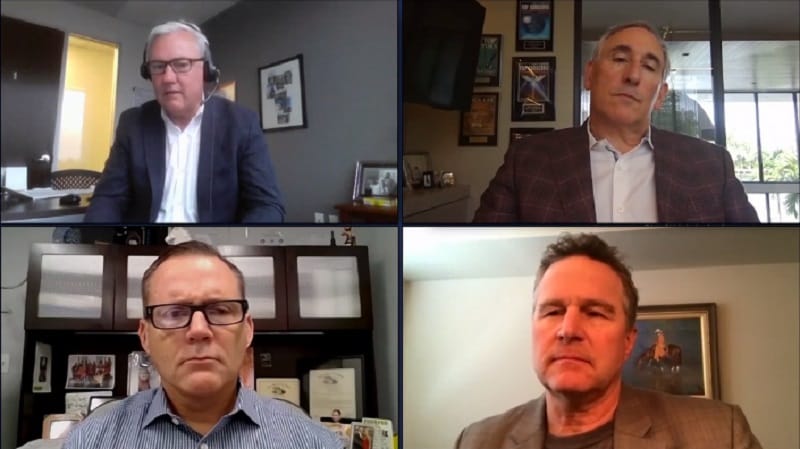Cell Tower Companies Seeking to Become Full-Service Communications Infrastructure Providers, Say Panelists at ConnectX
June 12, 2020 – During the virtual ConnectX conference of the Wireless Infrastructure Association, panelists addressed changes in the aims and ambitions of the humble cellular tower companies. “The future is converged,” said Alex Gellman, CEO of Vertical Bridge, on one of the webinar sessions hosted
Jericho Casper

June 12, 2020 – During the virtual ConnectX conference of the Wireless Infrastructure Association, panelists addressed changes in the aims and ambitions of the humble cellular tower companies.
“The future is converged,” said Alex Gellman, CEO of Vertical Bridge, on one of the webinar sessions hosted during the ConnectX event. The event launched in May, and new content has continued to go on the site in June.
In a session on the ways in which cell tower companies are branching out from their traditional mobile operations, to becoming full-service communications infrastructure providers, moderator Tim Downs said, “the business of owning sites has changed.”
Initially different infrastructure assets, such as fiber, small cells, data centers, and cell towers were all owned and operated by separate companies. Today, many companies that purely owned cell towers twenty years ago, have invested in other infrastructure resources.
“It’s hard to grow in just towers anymore,” said Gellman, explaining the trend, “particularly in the U.S. cell tower market, it’s grown so competitive.”
“I see it as an evolution,” Gellman continued, “five years ago communications infrastructure was not really a priority, there has been an immense increase of attention and capital flowing into communications infrastructure beyond just towers.”
“Tower companies are looking to see what business operations they can utilize to expand margins and maintain competitiveness,” said Gellman, “branching into other areas of communications infrastructure makes sense.”
Investing in communications infrastructure assets has not only been a trend among tower operators, but there has been growing investments from traditional infrastructure investors, who typically fund resources like highways and airports.
“Are we a drone docking station one day? Are we a place you can charge your electric car? Where can we get more tenants? I see a lot of room to advance to new opportunities, while we help wireless companies at the same time,” said Bill Hague, CEO of Tillman.
A new matter facing companies involves strategizing how to combine tower, fiber, data center, and small cell assets, in ways that beneficial to them.
According to Gellman, many tower companies, including Crown Castle, recently made moves to acquire data centers, as they prepare for bandwidth demands to surge in coming years.
Brett Lindsey, CEO of Everstream, detailed that three years ago, his company shifted the bulk of their acquisitions to fiber resources.
“Bandwidth requirements of our customers are so demanding that we have to put down fiber,” said Lindsey, “as soon as we give businesses 10 Gigabit upload and download capabilities, they start utilizing 8 Gigabits of service.”
“Everything is built off fiber. Fiber is the capillaries and arteries of all of this,” said Lindsey, hinting at the idea that one day his tower company may merge with a fiber entity.
The panelists pivoted into discussing the potential for network sharing in the United States, a practice that is more common among telecommunications providers in Europe and Latin America.
The panelists concluded that the opportunity for network sharing in the U.S. seems overstated.
“People don’t need to work together right now so they don’t,” said Lindsey, although he asserted that asset owners are going to have to come together to deliberate on the deployment of small cells.
Lindsey urged, “we cannot have all these different small cells from different companies littering the streets.”
“I think U.S. networks like to compete,” said Gellman, “with that being said, I think over time there will be more pressure on getting customers the service they need, over owning physical infrastructure, similar to what we see occurring in rural America.”









Member discussion